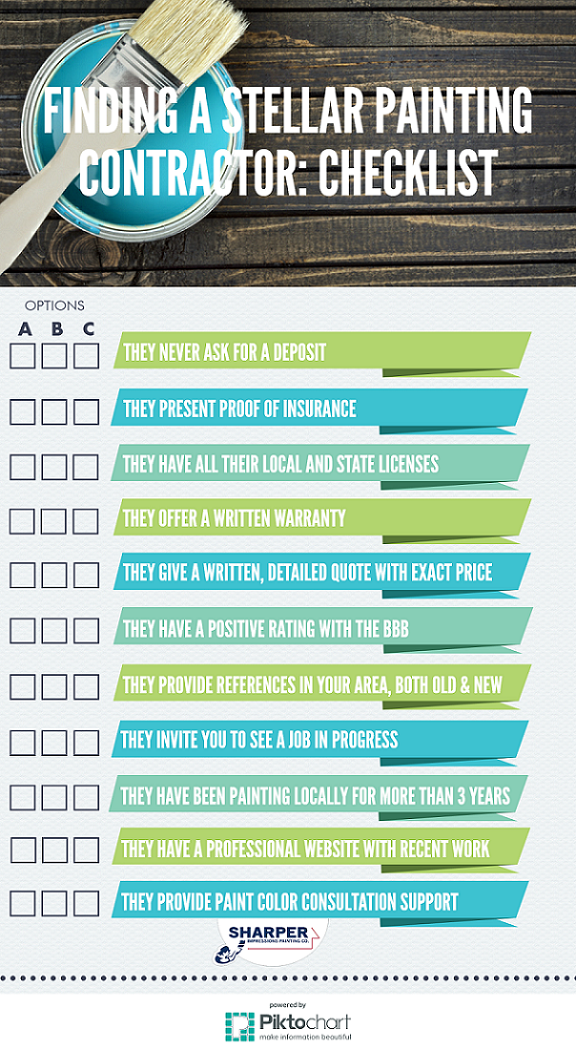Crucial Seasonal Aspects Of Commercial Exterior Paint: What You Must Understand
Crucial Seasonal Aspects Of Commercial Exterior Paint: What You Must Understand
Blog Article
Short Article Composed By-Ford Whalen
When you're preparing a commercial external painting task, seasonal aspects can make or break your results. You'll wish to think about how temperature level and humidity influence paint application and drying times. Picking the best period can guarantee your paint adheres properly and lasts much longer. Yet which seasons are absolutely the very best for this sort of work? Let's discover the crucial elements that can impact your project's success.
The Effect of Temperature Level on Paint Application
When you're preparing a commercial outside painting project, the temperature can substantially impact how well the paint adheres and dries.
Preferably, you want to repaint when temperature levels range between 50 ° F and 85 ° F. If it's too cold, the paint may not heal appropriately, resulting in issues like peeling or fracturing.
On the other side, if it's as well hot, the paint can dry too swiftly, preventing appropriate attachment and resulting in an irregular finish.
You ought to likewise consider the moment of day; morning or late afternoon provides cooler temperature levels, which can be much more desirable.
Constantly check the producer's recommendations for the specific paint you're using, as they typically provide guidance on the perfect temperature level variety for optimal results.
Moisture and Its Impact on Drying Times
Temperature level isn't the only environmental aspect that influences your commercial external paint job; moisture plays a considerable duty as well. High moisture levels can decrease drying times drastically, influencing the overall high quality of your paint task.
When the air is saturated with wetness, the paint takes longer to cure, which can cause issues like bad bond and a higher threat of mold development. If you're repainting on a specifically damp day, be prepared for extended wait times between coats.
It's essential to keep track of regional weather and strategy appropriately. Ideally, go for moisture levels in between 40% and 70% for optimum drying out.
Keeping these factors in mind ensures your project remains on track and provides a long lasting coating.
Best Seasons for Commercial Outside Painting Projects
What's the best time of year for your business outside paint projects?
Spring and very early autumn are typically your best bets. During these periods, temperatures are moderate, and moisture degrees are typically reduced, creating perfect conditions for paint application and drying.
Prevent summer season's intense heat, which can trigger paint to completely dry too quickly, leading to inadequate bond and surface. Likewise, winter months's cold temperatures can impede correct drying and healing, running the risk of the longevity of your paint work.
Go for https://www.bobvila.com/articles/best-house-painters/ with temperature levels between 50 ° F and 85 ° F for optimal outcomes. Keep in mind to inspect the regional weather forecast for rainfall, as damp conditions can wreck your job.
Preparation around these aspects guarantees your paint task runs efficiently and lasts longer.
Verdict
To conclude, preparing your business outside paint projects around seasonal considerations can make a considerable distinction in the end result. By organizing work during the optimal temperatures and humidity levels, you'll make certain far better bond and drying out times. Keep in https://professionalexteriorhouse44333.dreamyblogs.com/35532291/uncover-approaches-for-interacting-your-vision-to-your-painting-contractor-to-guarantee-the-project-s-success to watch on regional weather forecasts and select the correct time of year-- springtime and early loss are your best bets. Taking these actions will certainly help you attain a resilient and professional finish that lasts.
